by Bidhan K. Mohapatra, Ashok Kumar, Iftikar Wasim and N.C Banik
Shri Ganesh Kandi has not cultivated the groundnut on his farm in the past 10 years because of its low yield and low market price. With technical support from the DSR-Odisha/CSISA projects team, Ganesh successfully cultivated groundnut again during the 2021-22 rabi season. More importantly, it proved to be financially rewarding.
“The groundnut yield obtained in improved practice produced a record yield in the area,” said Ganesh. “This was achieved with minimal effort in terms of inputs. But mainly because of mechanical sowing, I could get a net income of USD 1,024 from one hectare.”

Shri Ganesh Kandi is a 45-year-old marginal farmer from Alasankha Village in Gop Block, Puri District in Odisha. At 10 years old his mother became the head of their family. She took care of everything and did her best under serious financial difficulties.
Because Ganesh’s mother could not afford to provide him with an education beyond secondary school, he dropped his hope of attending college. Like most men in his circumstances, Ganesh had to find work to help his mother meet the family’s basic needs by migrating from his village.
A farmer returns to his roots
After taking a series of non-agricultural jobs, none of which could financially support his and his family’s needs, Ganesh thought of a career that could make him independent and make a reasonable income. After leaving his village at the age of 20, he decided to return home and become a farmer.
Agriculture has been the primary occupation and source of income for his household of seven from which they earn about USD 3,840 annually. Currently, his wife and mother are also involved in agriculture.
They perform different farming tasks as needed but they make decisions together when it comes to their livelihood. Moreover, his wife is a member of a women’s self-help group (SHG) and is able to provide him with financial support for agricultural inputs and operations using loans from her SHG.
Swarna and Sumagold are the two major rice varieties he has been cultivating. He also grows chili and beans during the kharif season and local green and black gram varieties during the rabi cropping season.
Machine-driven farming
Although he has a very small landholding of about 0.30 hectares, he was confident that hard work would pay off. He leases some land each season to sustain the family’s expenses.
Because he has some experience in agriculture and has worked as a mechanic, Ganesh applied his knowledge to make agricultural activities require less labor, costs, and time.
He adopted mechanized land preparation for the first time in 1992 through service providers. In 2017, he started using mechanized harvesting. In the past five years, he has cultivated paddy as the main crop in the kharif and rabi seasons.
Ganesh also attended agricultural extension events and vocational training and visited local agriculture offices to learn about innovative technologies.
“My desire to learn new things has helped me in many ways,” Ganesh said.
Reaching out to farmers
In 2021, the three-year project Precision Direct-Seeded Rice-based Diversification Systems for Transforming Labour Requirement, Yields and Profitability of Smallholder Farmers in Odisha (DSR-Odisha Project), was launched to support farmers like Ganesh.
Funded by the Government of Odisha, the project is being implemented in five districts in the state by the International Rice Research Institute (IRRI) under the Cereal Systems Initiative for South Asia (CSISA) Project.
The core activity of the DSR-Odisha Project is mechanized and precision broadcast direct seeded rice during the kharif season. However, mechanically sown non-rice crops, such as pulses and oilseeds, and the most promising crop varieties and tailored agronomy for the rabi season are also included.
These crops are a means for intensifying and diversifying the cropping system to increase farmers’ productivity, profitability, and sustainability. This is also aligned with the federal and state governments of India’s key focus to enhance the production and productivity of pulses and oilseed crops.
Cluster demonstrations were laid out under the project during the 2021-22 rabi season to facilitate better learning about innovative technologies that could be adopted by farmers. The new technologies were developed to help enhance farmers’ income and allow them to diversify food choices, ensure nutritional security, and strengthen other social indicators.
In addition, it could also help address other issues such as unproductive rice fallows, decreasing soil health, limited irrigation water, and reducing the environmental footprint of rice production.
A familiar crop improved and repackaged
Ganesh has not cultivated the groundnut on his farm in the past 10 years because of its low yield and low market price. Being inclined towards mechanization and new technologies, he no longer owns bullocks for sowing groundnut seed and there were also no good varieties of the crop available.
He came to know about a new groundnut variety that can be sown mechanically under the DSR-Odisha Project. Convinced by the mechanized sowing of improved groundnut, green gram, black gram, and maize varieties and proper management showcased by the project, Mr. Kandi expressed his interest to be part of the demonstration farms.
He was particularly interested in cultivating groundnut again using a promising variety called Kadiri-6, a multi-crop planter, and the best-bet crop management package. He also greatly appreciated the technical support provided by the DSR-Odisha/CSISA Project Team.
The key changes in groundnut cultivation introduced by the project over farmer’s practice are shown in the table below.

Improved technology, improved variety, improved income
With technical support from the DSR-Odisha/CSISA projects team, Ganesh successfully cultivated groundnut again during the 2021-22 rabi season. More importantly, it proved to be financially rewarding.
Despite the added costs from better seedbed preparation, higher levels of MoP and sulphur fertilizer, and additional weed management, the total cost of cultivation (cost per unit area) in improved practice (USD 814/ha) was only 3% higher than the farmer’s practice (USD 794/ha).
Additionally, there were expenses in the improved practice cost that were lower compared to the farmer’s practice. These include the cost of seeds (18% lower), seed treatment (25% lower), sowing (20% lower), and crop protection (20% lower).
Practically speaking, it is the cost of production and overall economics that matter more in the return on farmers’ investment. We estimated the cost of production and found very interesting and encouraging results. The cost of production in improved practice (USD 315/ton) was 40% lower than that of farmers’ practice (USD 529/ton). Groundnut yield in the improved practice was 73% higher at 2.6 tons/ha than the yield from farmer’s practice of 1.5 tons/ha.
“The groundnut yield obtained in improved practice produced a record yield in the area,” said Ganesh. “This was achieved with minimal effort in terms of inputs. But mainly because of mechanical sowing, I could get a net income of USD 1,024 from one hectare.”
The net income estimated from the farmer’s practice of groundnut cultivation was only USD 310/ha.
The overall estimated benefit-cost ratio (BCR) in improved practice was 2.29 against 1.39 in farmer’s practice. This clearly reflects that the return on investment was much higher in the improved practice over the farmer’s practice.

Setting a path for others
To create awareness and achieve scale, the DSR-Odisha Project organized a field day, exposure visits, a traveling seminar, and mass crop harvest at the 0.4 ha-size groundnut demonstration farm on Ganesh’s land.
The uniform crop stand and better grain yield triggered the interest of farmers from his village as well as other stakeholders from nearby locations who visited the site.
Many of the farmers present during the mass crop-cutting were surprised to note such a tremendous yield advantage and expressed their interest in growing groundnut and other crops in a similar fashion.
The land, agro-climatic conditions, and some of the management practices were the same, but the mechanical sowing of an improved groundnut variety along with a few simple but better management practices like the use of balanced fertilizers, weed management, and irrigation changed the whole scenario in terms of cost of production, grain yield, net income, and return on investment. Above all, the change in the mindset of the many farmers and stakeholders who witnessed the advantages of the innovative technology in their area was a significant success.
“None of the technologies and varieties I tried earlier in rabi season motivated me that much in terms of the big monetary gain and better food and nutritional choices for our household,” said Ganesh.
Demonstration farms serve as evidence for others to follow and upscale the technology in similar agroecologies and cropping systems. Ganesh’s participation has led to the high demand for the mechanical sowing of groundnut as well as pulses in DSR-Odisha/CSISA Project target areas.
Farmer’s perspectives and way forward
Ganesh remains in touch with the team from the DSR-Odisha/CSISA as he plans to grow groundnut in suitable areas instead of other crops which he had been growing for the past couple of years. Also, he is planning to lease more land where he will sow other potential crops such as pulses and oilseeds for the rabi season and direct-seeded rice in the kharif season using mechanical seeders.
However, serious challenges such as the availability of appropriate multi-crop planters, improved varieties, and irrigation support still exist. These gaps must be bridged with technical support from expert agencies and policy support from the State Government for the upscaling of these technologies that aim to help farmers attain prosperity, food and nutrition security, maintain soil health, and have a safer environment.
Therefore, an inclusive approach of convergence and strong coordination among government agencies (policy intervention), research and development institutions (technical support), private companies (machine/input/output market), and farmers (ground reality and needs) must be in place for developing and executing different system-based models.
Business models for agricultural service providers, a thriving seed production industry, making improved varieties available in formal seed systems, and crop diversification, among others, are crucial to popularizing the mechanized sowing of pulses and oilseeds alongside mechanized DSR.

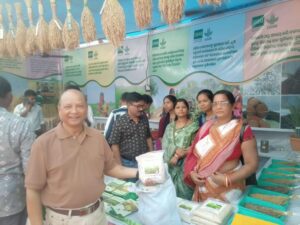
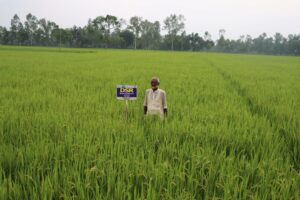
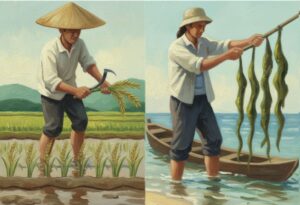
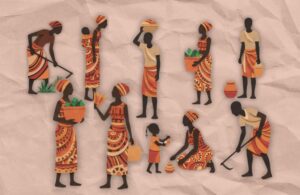
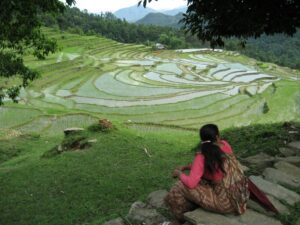
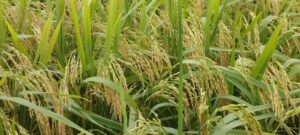
Very impressive. I would love to learn more about improving productivity of smallholder groundnut producers.